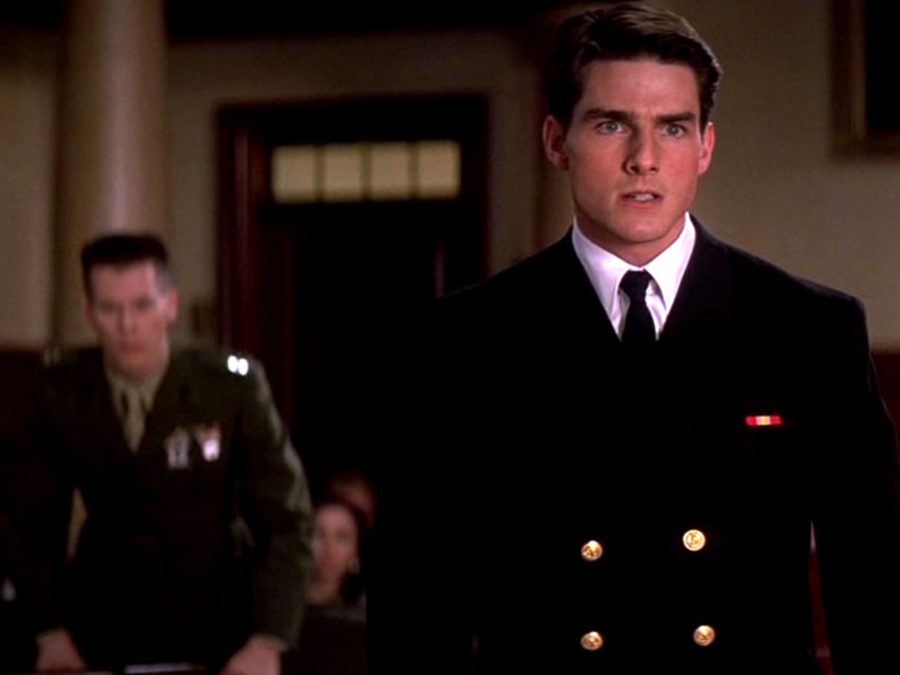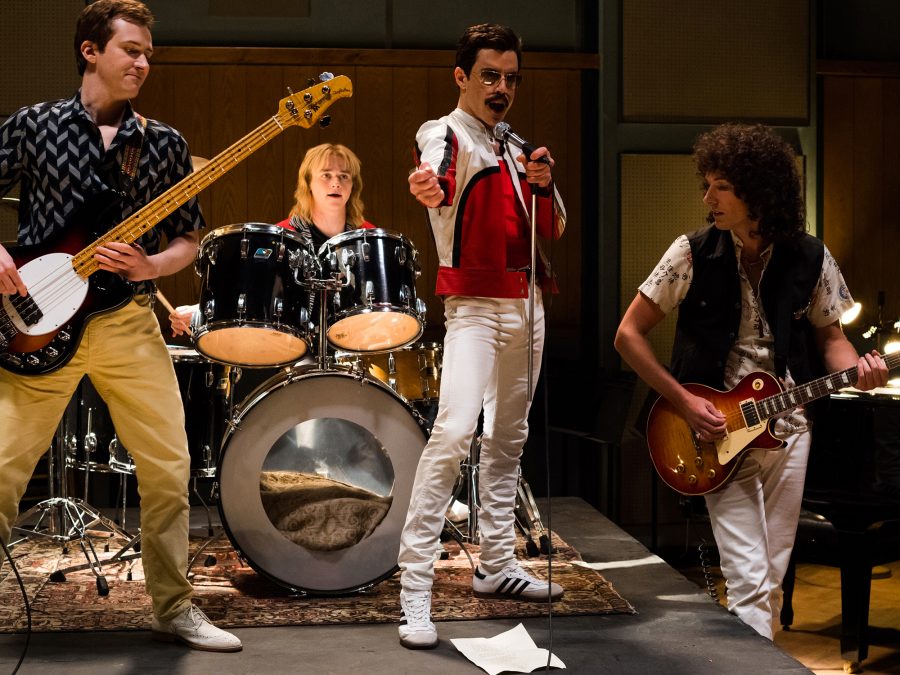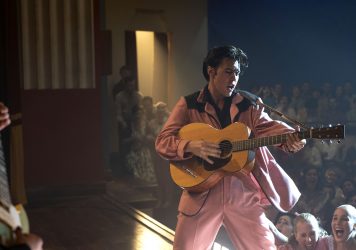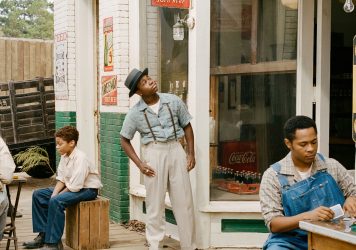
What do Elvis Presley, Mamie Till, and Weinstein scandal reporters Jodi Kantor and Megan Twohey have in common? All have recently received the Hollywood biopic treatment – in addition to Ronald Reagan, Marilyn Monroe, Whitney Houston, Emily Brontë, and many more. The biographical film is one of the hottest trends in Hollywood and shows no signs of slowing down, having contributed a slew of this year’s biggest and most acclaimed films, from Elvis to Weird: The Al Yankovic Story.
The biopic itself is nothing new. It has been a production staple for most of film history, including classics like Judith of Bethulia (1914), Young Mr. Lincoln (1939), Lawrence of Arabia (1962), Raging Bull (1980), and Catch Me If You Can (2002). But starting in the early 2000s, the number of biopics produced in Hollywood began to grow – a trend which continued into the 2010s. Today the biopic is up there with the superhero movie as one of the biggest and most consistent types of film being made in Hollywood.
What lifted the biopic to its central status in the industry today? The answer most likely has to do with the decline of the medium budget film, those which typically run a production cost of between $5 million and $80 million. That’s enough to produce a well-made, respectable movie with a big star but with few extravagances – in between a low-budget art film and a big-budget blockbuster. Think of a courtroom drama like A Few Good Men, a high-end horror film like The Shining, or a romance like Shakespeare in Love (two of which, it should be said, were based on preexisting intellectual property, and the third on historical figures).
The problem is that over the last 75 years, movie theater attendance has plummeted. A 2021 Gallup poll revealed that the average American had visited the movie theater a mean of only 1.4 times in the entire past twelve months. Although this shockingly low number can partly be attributed to the COVID theatrical slump, even between 2001-2007 that number was still only 4.8 times a year. Compare this to the fact that in 1947 around 60% of Americans went at least once a week, according to Business Insider.

The sad reality is that people don’t go to the cinema much these days. For many, it just doesn’t make sense to pay between $10 -20 to see a movie when they could stay home for free and watch something on Netflix, HBO Max, YouTube, or any of the other streaming services at their fingertips. But when they do go out, most audiences want to see something they can’t get (typically) from those other sources– usually a blockbuster with a massive budget and spectacular effects. Combined, these factors – declining ticket sales, the rise of TV and streaming, and (as Matt Damon discussed in a recent interview) the collapse of the DVD market – have all hollowed out the medium budget space. For the most part, these movies don’t make money anymore, so present a larger fiscal risk to producers.
As studios have discovered, one of the only semi-reliable ways to lure viewers out of their living rooms is to tap into a property that the public already has a proven interest in: pre-existing franchises like Marvel, Star Wars, or Jurassic Park; mining old IP to create a new franchise, such as Top Gun; adaptations of a best-selling book or video game like last year’s Uncharted or Where the Crawdads Sing; or a reboot of/sequel to a major series like Halloween. Given how uncompromising the film market has become, there’s not much leeway to venture far from these time-tested paths.
Consider that out of the fifty highest grossing films in history, as recorded by Box Office Mojo, only five were not part of a franchise at the time of their release: Frozen, Zootopia, Titanic, Avatar, and Jurassic Park. Of these five, all still relied on some form of name recognition: Frozen and Zootopia as products of the beloved Walt Disney Pictures; Titanic and Avatar from the mind of director James Cameron, as well as the famous ship (for the former), and on the novelty of the 3D gimmick (for the latter); and Jurassic Park on that of Steven Spielberg and the best-selling Michael Crichton source novel. If one wants to make money, franchises and name recognition are simply the way to go.
Enter the biographical film. By centering the story around a well-known individual, a studio is able to greatly increase the marketability of a medium budget film that might otherwise struggle at the box office. Consider, for example, Andrew Dominik’s controversial Marilyn Monroe biopic Blonde. Stripped of Monroe’s name recognition, it’s a small-scale character drama that explores the inner conflict of a troubled actress over a slow, contemplative, almost three hour runtime. There are no explosive action scenes or world-ending stakes, most people have never read Joyce Carol Oates’ doorstop of a novel that served as the source material, and Ana de Armas – while a good actress –is not the sort of A-Lister whose name recognition can carry an entire film. In other words, precisely the kind of medium budget film that would normally fail to draw viewers in any serious number today.
Blonde is financially nonviable until one element is introduced: the struggling woman in question is Marilyn Monroe. Suddenly, people’s ears perk up. By focusing on a household name, the biopic film is able to entice viewers to see a movie they otherwise might not. Monroe is a world-famous actress who comes with a built-in fan base ready to go, and has enough cultural cache that even those who may never have seen one of her films are still interested in a movie about her. The way this works is really not so different from comic book movies like Ant-Man or Black Adam, which draw in viewers even with lesser-known characters.

Clearly this strategy works. 2018’s Bohemian Rhapsody raked in a staggering $910 million on an estimated $55 million budget, making it not only the highest-grossing biopic ever, but also the highest-grossing drama in history. It’s not every day that a mid-budget drama makes nearly a billion dollars. The biographical element introduces entirely new financial possibilities, while still maintaining the movie’s status as a prestige film: a serious work of art that will excite the critics and has a real chance to win an Academy Award. Bohemian Rhapsody won four Oscars (Best Actor, Film Editing, Sound Editing, and Sound Mixing), while Elvis is currently nominated for six (Best Picture, Actor, Cinematography, Editing, Production Design, Costume Design, Makeup and Hairstyling, and Best Sound Design), in addition to its impressive $287 million worldwide gross.
A likely contributor to the powerhouse Bohemian Rhapsody’s popularity is the way it methodically hits on famous moments from Queen’s career and evokes nostalgia in the viewer – a tactic commonly used in blockbuster franchise films like Jurassic World. The movie progresses through a series of nostalgic moments such as Freddie Mercury meeting the band for the first time and instantly singing with them in harmony, young Freddie lying lazily in bed and playing the first few notes of “Bohemian Rhapsody” on piano, the band recording “Bohemian Rhapsody” in studio, the famous Live Aid concert of 1985, and so on. In fact, it is so concerned with depicting all these feel-good moments that it can sometimes seem more like a clip compilation or a checklist than a real movie, and spends little of its time developing characters in any serious way.
Another technique that many modern biopics rely on is the recreation of famous images from the subject’s life, such as photographs, concerts, films, etc. This is what makes the entertainer biopic so potent as a money-making tool; because musicians and film stars live so much of their life in the public eye, there is never a shortage of such nostalgia-ready, Easter egg-laden moments to draw from. Elvis recreates the King’s Las Vegas stage, his home Graceland, his memorable outfits, and many of his famous performances on stage, television, and film. Blonde recreates several iconic moments from Monroe’s career, including the “Diamonds Are a Girl’s Best Friend” dance number from Gentlemen Prefer Blondes, the scene in The Seven Year Itch where her skirt is blown up by a gust of air, and even photos of her with then-husband Joe DiMaggio.
As with Marvel movies, these Easter eggs provide a sense of reward for the fans who can spot them, as well as creating a feeling of being in the in-group—a way for the director to say to the eagle-eyed viewer, “You’re a true fan, like us.” Furthermore, many scenes in Bohemian Rhapsody are deliberately written to enhance this in-group feeling for fans of Queen. After recording their album A Night at the Opera, for example, the band has a contentious meeting with fictional record executive Ray Foster (played by Mike Myers).
Foster refuses to make “Bohemian Rhapsody” the single for the album, saying it has no chance at commercial success because it’s too experimental for popular tastes. After the band storms out of the meeting, Foster grumbles to his employees, “If they’re not careful, by the end of the year no one will know the name Queen!” Myers delivers the line with such a hard emphasis on “Queen” that it comedically emphasizes how wrong he is. We laugh at Foster and with the band, and are encouraged to feel like a member of the group by doing so – an effective technique to generate positive emotions for fans of Queen.
Other than those about entertainers, the most common type of biographical film in Hollywood today is the social issue biopic. These movies, like 2022’s Till and She Said, tell stories relating to racism, gender discrimination, or other social issues such as judicial reform (2019’s Just Mercy). These are often more serious in tone, and, because they tell socially important stories with the weight of truth, are often perfect ‘Oscar bait’ movies. However they, like political and sports biopics, are less consistent financially than those about popular entertainers. Both Till and She Said financially underperformed, while in previous years 12 Years A Slave and Selma fared much better.
The strategies that seem to work best at the box office are the exploitation of name recognition, the evocation of nostalgia, the inclusion of Easter eggs, and a light-hearted atmosphere that celebrates the subject without much interrogation (Elvis, for example, is uncritical of Presley’s appropriation of Black music or the fact that his future wife Priscilla was 14 years old to his 24 when they began dating). The entertainer biopic is by far the most conducive to all of these, and this is why it’s the most consistent biographical money maker. Other forms, like the social issue biopic, usually refuse many of these easy win strategies and are often based on lesser known subjects. Till was widely praised by critics, but the racist atrocities of the Jim Crow South are not exactly the light-hearted escapism that the audience-at-large are looking for, and the name Emmett Till does not quite have the same global appeal as Elvis Presley.
But in all its forms, the biopic offers relative stability and consistency in an industry where medium budget films so often fail. It allows studios to round out their slate and produce something other than a superhero film, and with a much better shot at winning an Oscar too. This is why the biographical film has become such a major trend in recent years, and why it won’t be slowing down any time soon – 2023 will see the release of films about Napoleon, Priscilla Presley, Robert Oppenheimer, and Leonard Bernstein, while projects about Ronnie Spector, Bob Dylan, Carole King, and Fred Astaire are also in development. As long as audiences keep turning out in droves, the biopic onslaught will continue – at least until they’ve gone through all eight billion humans on Earth.
Published 20 Feb 2023

Baz Luhrmann’s sweaty, opulent take on the King of rock ’n’ roll is not a biopic but a fairy tale.

Freddie Mercury and Queen receive the long-awaited glossy biopic treatment courtesy of Bryan Singer.

By Rogan Graham
Chinonye Chukwu directs a magnificent Danielle Deadwyler and Jalyn Hall as they play Emmett Till and his grieving mother, Mamie.